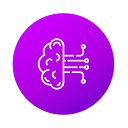ROS the Robot Operating System
Before ROS, let’s discuss what robot programming is.
Robot programming is essentially the process of giving instructions to a robot so that it can perform tasks. Every robot has a computer inside it, which acts as the brain of the robot. This computer can vary from a logic circuit to a single-board computer like Raspberry Pi. The computer’s role is essential in the thinking part of the robot’s operation. In robot programming, the computer is connected to sensors and actuators.
To simplify the working of a robot, we can break it down into three steps: — sense, think, and act. The computer inside the robot plays a crucial role in the thinking part, where it processes data from the sensors and sends control signals to the actuators. For the robot’s computer to effectively think and work, we need to load specific programs. Based on these programs, the robot will act accordingly. Robot programming essentially involves the processing of sensor data and the execution of tasks through the actuators.
What is ROS in Robotics?
ROS, short for Robot Operating System, is a framework that revolutionizes the way we program robots. Let’s imagine a scenario where you want to build a robot from scratch. You would have to create all the programs and mechanics from the ground up. But with ROS, you can avoid reinventing the wheel. ROS provides us with a framework, offering pre-existing modules and resources that we can utilize to build our robots more efficiently.
A feature of ROS
Why do we need ROS?
One of the fundamental advantages of ROS is its ability to facilitate inter-process communication. This means that multiple programs or processes can communicate with each other seamlessly. This capability has immense potential in the field of robotics. For example, instead of creating a single program to handle all the sensors and actuators in a robot, it is much more efficient to modularize the system. This modular approach allows for better bug fixing and maintenance.
ROS offers a wide range of functions and tools, with its main focus on communication. Instead of writing code from scratch to achieve communication between different programs in a robot, you can simply use ROS APIs or functions. ROS takes care of the sending and receiving of data, making it easier and more efficient to implement communication within a robot.
ROS Inter process communication.
A snip of ROS Tool RViz.
Difference between ROS 1 and ROS 2.
While both ROS 1 and ROS 2 provide APIs for programming robots, the main difference lies in the communication middleware. Middleware acts as a software intermediary between the user and the operating system, making interactions smoother and providing APIs for communication. In ROS 1 and ROS 2, the middleware used differs significantly. ROS 2 has an entirely new and improved middleware, which is also compatible with industry standards. It offers a fresh framework that enhances the efficiency and effectiveness of robotic programming.
Is ROS an Operating System?
Contrary to what its name suggests, ROS is not a real operating system. It is rather a framework that shares some similarities with an operating system, such as a message-passing interface and a file system. However, to install ROS, you need an operating system like Ubuntu.
Why do we use ROS in a robot?
Beyond facilitating communication, ROS offers numerous high-level functionalities that simplify robot development. These include navigation, mapping, manipulation, and more. For instance, when implementing navigation for a robot, you don’t need to reinvent the wheel. You can simply download the relevant ROS package and configure it for your robot. It is important to note that using packages and tools provided by ROS does not automatically make someone an expert in ROS. Understanding the basics and concepts of ROS is essential. By building a solid foundation and applying your knowledge, you can utilize the capable tools and plugins offered by ROS to create robust and efficient robotic systems.
A glimpse of ROS functions Navigation and Mapping.
ROS Node Graph
ROS Equation.
To summarize the essence of ROS, we can refer to the ROS equation:
Plumbing: This describes the inter-process communication facilitated by ROS. By establishing communication between different programs, we create a computational graph that allows for efficient data exchange.
Tools: ROS provides a range of tools for debugging and diagnosing the computational graph and inter-process communications. These tools, including both command line tools and GUI tools, aid in the inspection and analysis of the communication between different components of a robot.
Capabilities: ROS offers an extensive selection of features and capabilities, covering areas such as navigation, manipulation, mapping, and more. By utilizing ROS, developers have access to a wide range of drivers, algorithms, and user interfaces, allowing them to focus on the specific application they are developing.
Community: The ROS community is extensive, diverse, and international. It is composed of individuals, groups, and organizations ranging from enthusiasts and students to large enterprises and government agencies. The collaborative and supportive nature of the ROS community contributes to the growth and advancement of the framework.
Learn more: bootcampai.org
